“Summer 2024 shatters records for severe weather damage: Over $7 billion in insured losses from floods, fires and hailstorms.” That’s the headline from a recent Insurance Bureau of Canada blog post. The post highlights the unprecedented number and severity of natural disasters across the country that resulted in a 406% increase in the number of property insurance claims compared to the 20-year average. “These events are escalating at a shocking rate and Canada is simply not prepared”, said Celyeste Power, IBC president.
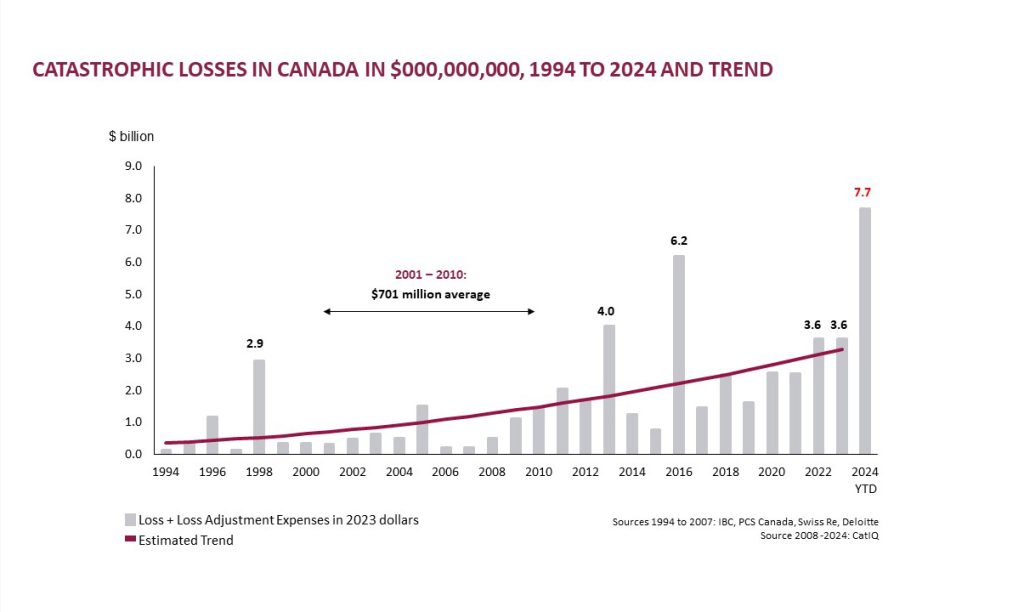
It’s clear weather events fueled by a changing climate are having an increasingly devastating impact that hurts the Canadian economy, creates environmental destruction, and causes suffering and hardship to Canadian families across the country. It is also clear that, collectively, we are not doing enough to address the climate crisis.
Last week The Atmospheric Fund (TAF) released its GTHA carbon emissions inventory report for 2023. TAF is a Toronto based, non-partisan, not-for-profit agency with the purpose to help the Greater Toronto and Hamilton area (GTHA) become net-zero by 2050. TAF has been collecting and analysing emissions data since 2015. and providing recommendations to the 6 GTHA Regions on how they can reduce emissions to meet 2030 targets. These targets are set by each Regional Government and form part of the Canadian Paris Accord commitments . For Brampton, those targets were set as part of the City’s Community Energy and Emissions Reduction Plan approved by Council in 2019.
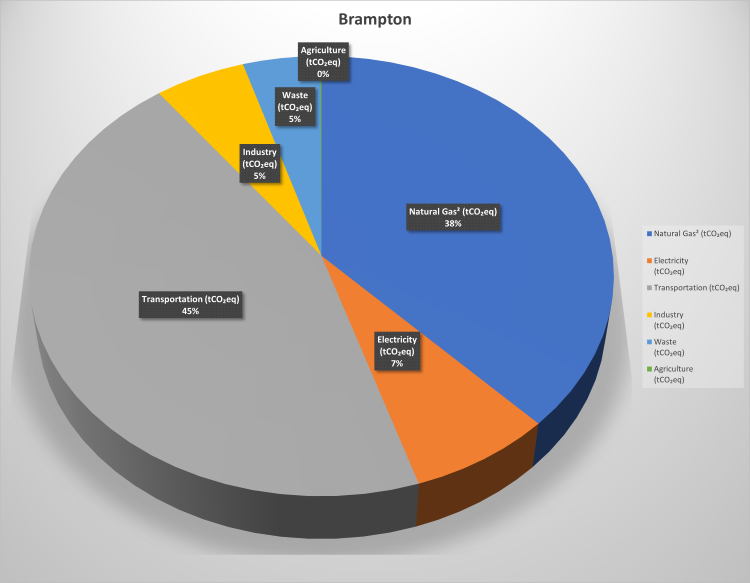
Previously TAF reported that carbon emissions in the GTHA decreased by 0.4% in 2019 and 13.4% in 2020, The latter decrease was driven mostly by pandemic impacts to the economy. At that time the 2030 targets could be met by achieving a 7% average annual decrease from 2019-2030. Since then, however, emissions have steadily increased. In 2023 they surpassed pre-pandemic levels rising 2% from 2022 to 54.5 million tons. Meeting 2030 targets now requires annual reductions of 11%.
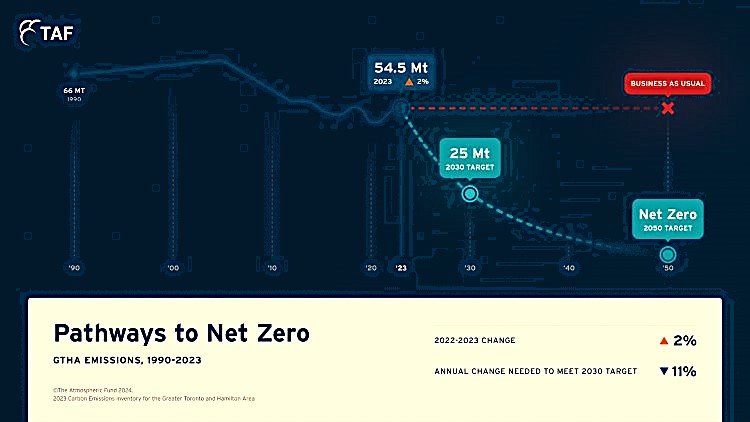
Peel Region’s emissions grew 2.5% to 11.5 million tons. The per capita rate went down by 1.1% to 7.5 tons per person. That decrease, however, compares unfavourably with Toronto’s 2.6% decrease to 5.2 tons per person, a 44% difference!
For Brampton, transportation and buildings represent the largest emissions by sector. Transportation was up 6% from 2022. It would have been even more except that Brampton also experienced a shift in mode share to active transportation. Cycling trips were up 22% and walking trips were up 14%. Cycling distance increased 17% and walking distance was up 8%. This is notable and contrasts favourably with Mississauga and Caledon where Mississauga saw a decrease in cycling and Caledon’s rate of walking decreased according to the report. See BikeBrampton.ca for more details about changes to active transportation in Brampton.
Emissions from buildings in the GTHA decreased slightly in 2023 mostly related to a warmer than normal winter that reduced natural gas heating requirements. Natural gas consumption details were not available for several municipalities so building emissions can’t be compared at the city level. But positive steps have been taken that should see future decreases in this sector.
For example, along with the other Peel municipalities Brampton has implemented mandatory green development standards for new buildings. Called the Sustainable New Communities Program, it encourages and evaluates sustainability performance of new development projects through a points-based system. Since January 2023, all projects are required to meet the minimum Bronze level standard as well as a “Good” level for building energy efficiency and greenhouse gas reductions.
In 2022, Brampton created the Centre for Community Energy Transformation (CCET), which is a not-for-profit organization that assists residents and businesses with the tools, education and resources for energy-saving installations and retrofits to existing buildings. CCET was initiated in Brampton but its mandate has expanded to all three Peel municipalities and further expansion plans are in the works. Visit CCET website for more information about home energy retrofits and district energy projects.
The TAF report is cautiously optimistic that 2030 emissions reduction targets can be met. The report noted that emissions from buildings have remained relatively constant while the area has grown by almost a quarter million people. As noted above positive trends were seen in a rise of the use of active transportation, (cycling/walking), the uptake of home energy retrofits, and the normalization of green building standards for new developments.
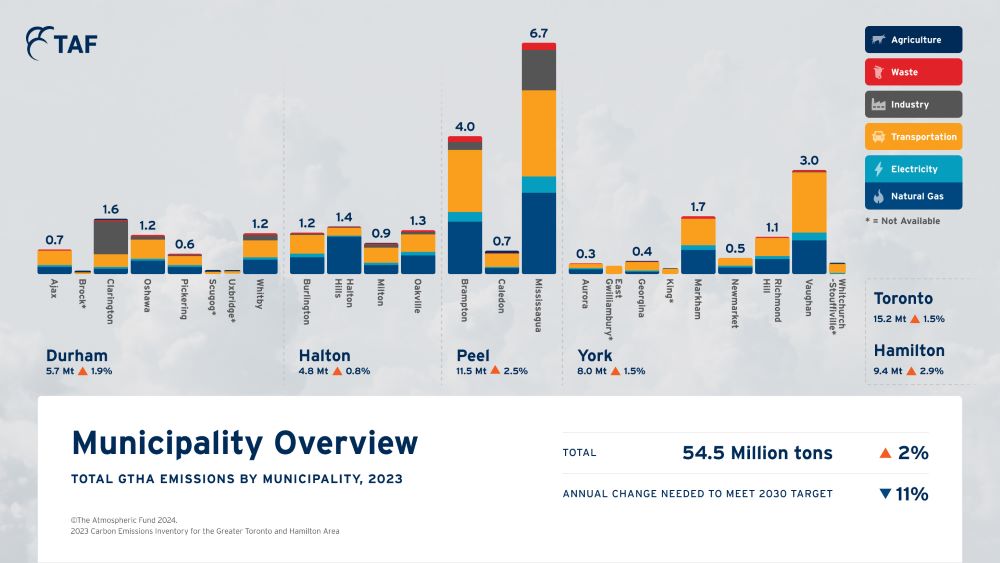
It is crucial, however, that there is full collaboration amongst all government levels, businesses and citizens to support the necessary policies and associated actions necessary to bend the emissions curve. The report makes recommendations for how that could be achieved. A summary of government recommendations follows:
Recommendations for Federal Government
- Enact Clean Electricity Regulations to ensure a net-zero electrical system across Canada,
- Invest in EV adoption and infrastructure,
- Restrict the use of gas-fired heating equipment,
Recommendations for the Provincial Government
- Prioritize implementation of net-zero electricity supply as opposed to natural gas,
- Remove barriers to local electricity supply by ending the off-shore wind moratorium, extending community net-metering, and double the threshold maximum for micro-generation projects,
- Update the Ontario Building Code to increase minimum standard for building energy efficiency, facilitate EV charging requirements, and provide an update schedule for industry compliance,
- Facilitate EV adoption through purchase incentives, tax credits and or rebates,
- Finance charging system infrastructure in multi-unit dwellings and urban centres
Recommendations for Municipalities
- Enforce and enhance Green Development Standards
- Implement emissions performance standards for existing buildings,
- Support EV charging infrastructure
- Prioritize active transportation and transit,
- Update permitting and zoning bylaws to remove existing barriers to climate action such as the installation of solar and heat pumps.
What you can do to help Brampton meet its emissions reduction targets
While time is running short, there is still an opportunity to meet 2030 carbon emissions reduction targets. You can help in three ways:
Change your personal habits
There are lots of small, medium and large things that we can do as individuals or as a family that will lower our carbon footprint. If a lot of us make even small changes, it will make a BIG difference. For instance:
- Walk/cycle more and drive less,
- Purchase an electric vehicle or take transit,
- If you live in your own home, perform an energy audit and follow suggested efficiency upgrades including:
- Upgrade windows to triple pane,
- Upgrade attic insulation,
- Weather seal windows, doors, baseboards, electrical outlets, etc.
- Transition heating and hot water system from gas to electric heat pump,
- Install solar panels,
- Install solar hot-water system
- Reduce food waste and ensure kitchen scraps are composted or thrown in the green bin,
- Eat more vegetarian meals,
- Buy gently used rather than new or buy good quality items that last a long time. Repair broken items rather than throwing them out. Buy things that you need, or are important to you.
- Forget frivolous gifts! There are better ways of showing that you care.
How you vote matters
We need to let our political leaders know that the environment is important to us. Remind them that it is their duty to balance economic, social and environmental sustainability so that the quality of life in our city can be maintained. It cannot be economic growth at all costs as we will end up paying far more because of the negative impacts of social unrest and environmental degradation.
Support those organizations that are doing the right things
Christmas is a time of giving. There are lots of environmentally, and socially focused organizations out there that are doing a great job and deserve our financial support as well as a bit of our time. Give generously on both accounts. That includes local news organizations that support investigative reporting. These organizations will help keep our politicians honest. But, with more and more advertising revenues going to huge international media companies that lack a moral conscience, these local outlets need your financial support now more than ever.

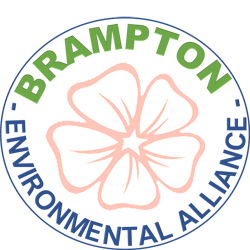

One Reply to “Record Severe Weather Costs Canada $7 Billion: TAF’s 2023 Emissions Report Show Us What’s Next”